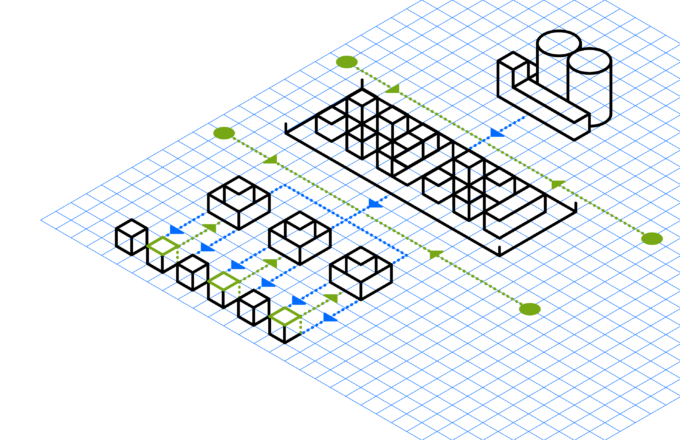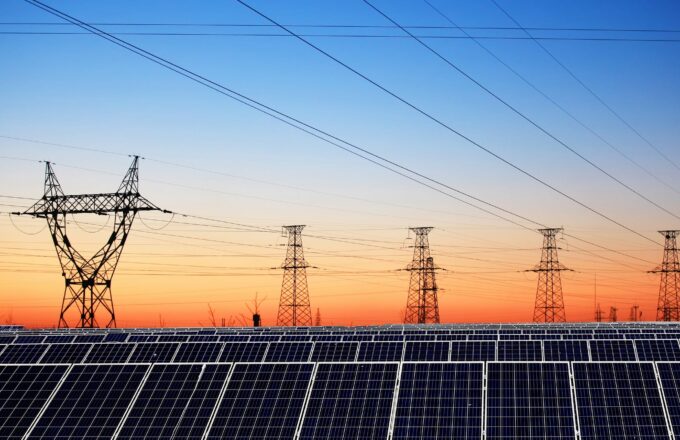Australia’s ‘can do’ transition is a lesson for us all

By Dr Jon Hiscock, Fundamentals CEO
Australia is driving its transition from fossil-fuelled electricity generation to renewables faster than any other developed nation. As I learned on my recent trip down under, it’s a product of a radically reorganised energy industry, designed to supercharge the roll out of renewables in every form. Above all, it’s being driven by a ‘can do’ political strategy that is attracting massive private sector investment.
The contribution of renewables to Australia’s electricity generation mix has risen from 30% in January 2018, to 71.9% in January 2025, according to the Australian Energy Market Operator (AEMO). In November 2024 it hit 75.6% – a staggering 151% rise in six years.

Who is paying for this? Well, AEMO reports average electricity prices fell 10% from AUS$89.18/MWh in Q3 2023 to AUS$80.15/MWh in Q3 2024, as more renewables are delivering cheaper energy for consumers – with lots more connections in the pipeline. Proof indeed that the cost of investing in renewables can be offset by lower energy bills.
Attracting investment
Australia’s breakneck transition from coal to renewables is being driven on several fronts. Companies are being attracted to invest billions in Renewable Energy Zones – virtual power stations designed to replace coal-fired plants with a mix of solar, wind, hydro and storage. New regional transmission and distribution grids are being built, and importantly, the ability to connect to them is being fast-tracked.
At the end of Q3 2024, 45.6 gigawatts (GW) of new capacity were progressing through the connection process from application to commissioning: a 36% increase compared to the same time in the previous year. This included 14.6 GW of battery projects: an 87% increase on Q3 2023.
Domestic customers also have powerful incentives to contribute to the transition. In the third quarter of 2024, rooftop solar accounted for 38.5% of total generation, with grid-scale solar contributing 18.3% and wind contributing 13.4%. Energy from each of these continues to increase.
Embracing innovation
Fundamentals and our Australia-based partner, EcoJoule Energy, are increasingly involved in supporting the transition, particularly in control of LV (low voltage) voltages in community scale applications.
We are in talks with several Australian network operators about their potential use of an advanced voltage control solution which would enable them to participate in the balancing market by amending system voltages to influence electricity demand, heralded by Ofgem as ‘a cost-effective, low carbon technology that has the potential to reduce bills to consumers … and can make a major contribution to our Full Chain Flexibility vision for a secure, affordable, net-zero electricity system’.
Fundamentals’ SuperTAPP SG Automatic Voltage Control (AVC) relay is the core technology of the solution, used to increase or reduce voltages by amounts that are imperceptible to consumers, to amend load demand. The relays are linked to a control centre, which uses an advanced network management system to respond to grid frequency changes caused by the imbalance between energy demand and generation.
Meanwhile, EcoJoule Energy is experiencing tremendous demand for its EcoVAR Static Compensator (STATCOM), which is highly effective at controlling voltage fluctuations caused by Australia’s fast-expanding installation of rooftop photovoltaics, together with its EcoSTORE battery systems, for community-scale energy storage and voltage control. We are now marketing both solutions in the UK, as core parts of our Total Voltage Control portfolio.
What we can learn
Here’s what I think we can learn from Australia’s transition from coal to renewables. They have:
- Recognised that increasing floods, droughts, fires and heatwaves are evidence that climate change is a national (and global) threat.
- Developed the political and popular will to drive the transition.
- Radically restructured the energy industry and regulatory governance to make things happen i.e. rapid approvals and connections for Distributed Energy Resources (DERs).
- Fast-tracked a comprehensive strategy to make the transition at pace, at national, state and local levels.
- Made private sector investment in renewables highly attractive.
- Adopted a whole-system approach, including new grid infrastructure to connect thousands of DERs.
- Encouraged and embraced technological innovation.
- Proved that renewables can deliver cheaper, as well as sustainable, energy for consumers.
Above all, we need to take on board Australia’s can-do attitude: ‘If it needs doing, we need to get on with it’.
Learn more

- Automatic Voltage Control (AVC/AVR)
Hydrogen’s potential for balancing the grid

- Automatic Voltage Control (AVC/AVR)
SuperTAPP SG saves £20k+ per distributed energy connection

- Automatic Voltage Control (AVC/AVR)
- Control Scheme Services
- LV Network Control
- Tapchanger Services
Fundamentals launches Total Voltage Control to deliver voltage compliance for a low carbon grid

- Automatic Voltage Control (AVC/AVR)